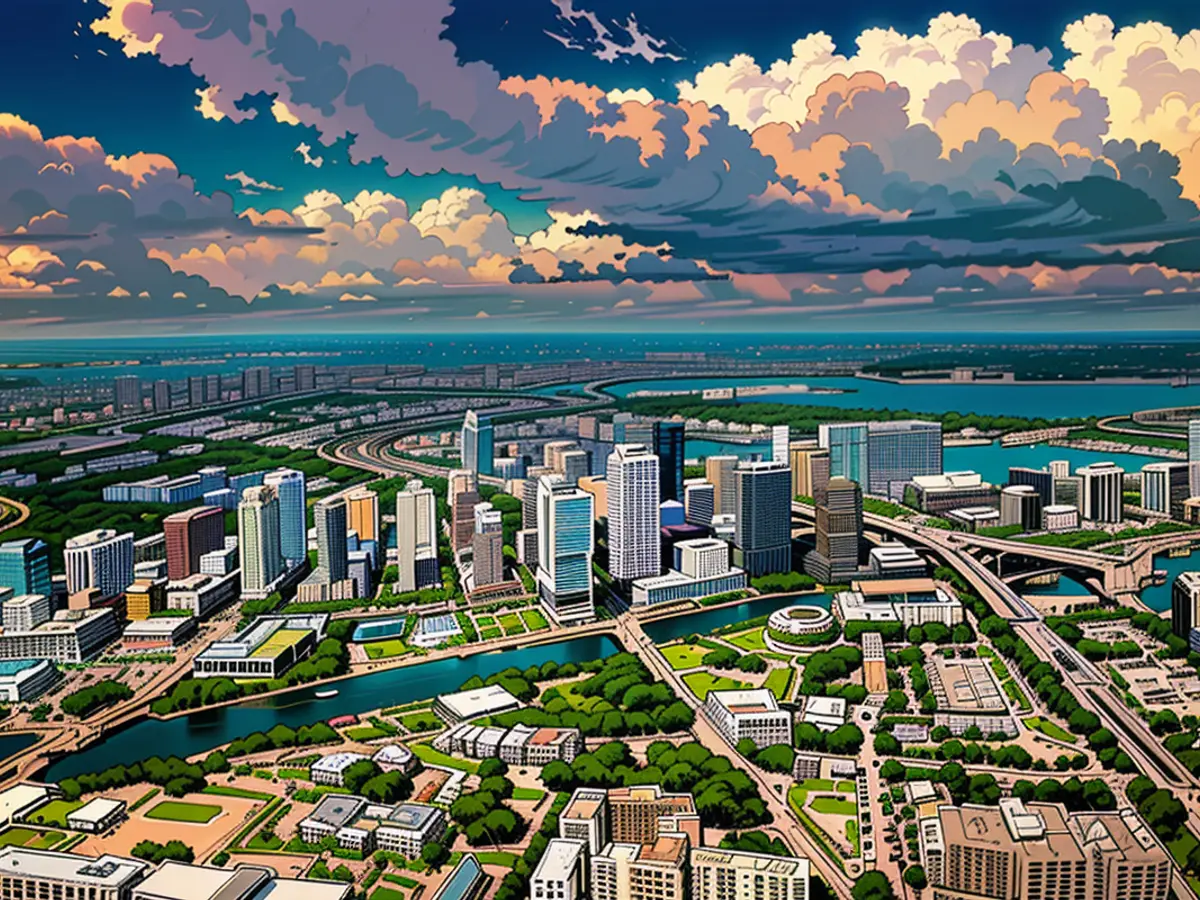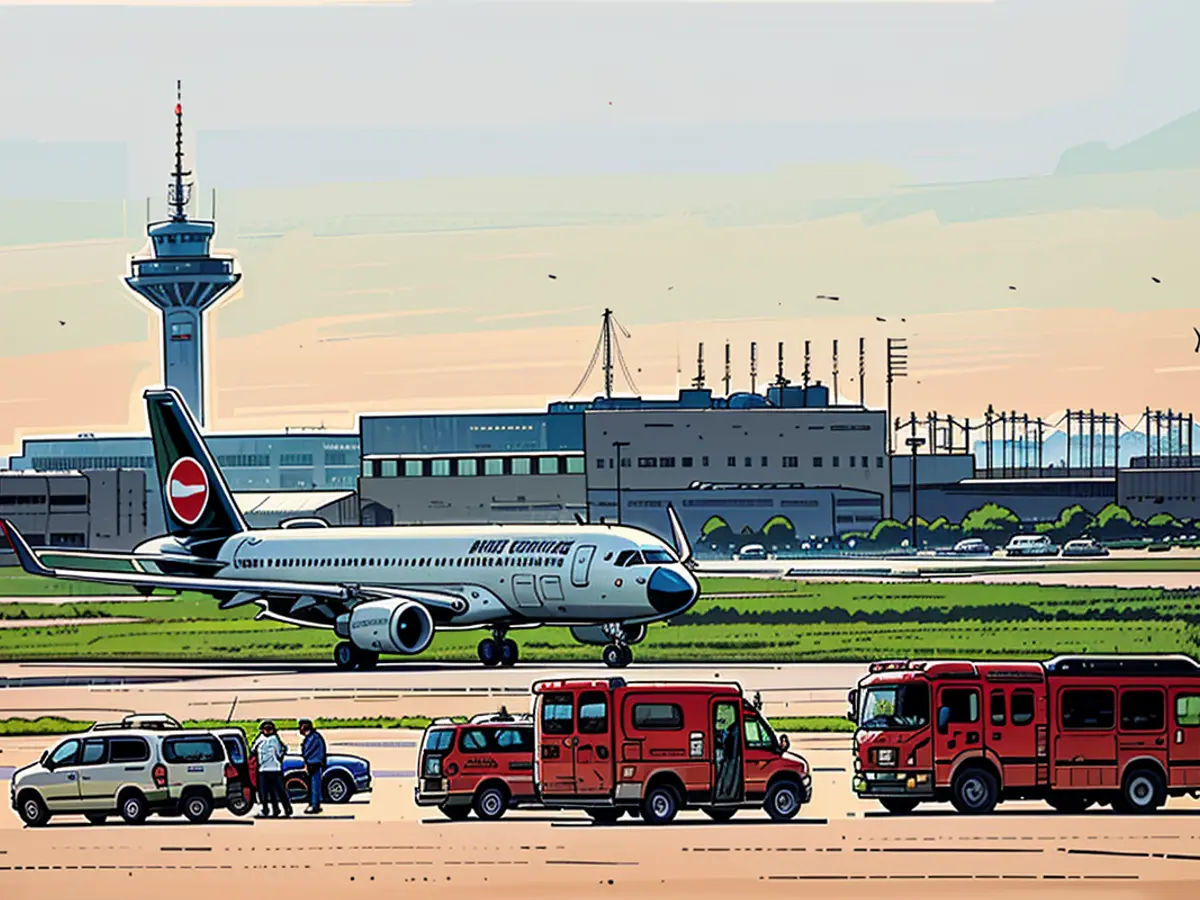See where inflation is the highest and lowest in America
The Tampa-St. Petersburg-Clearwater region in Florida recently saw the lowest inflation rate among 23 metropolitan areas across the country — 1.8% in the 12 months that ended in May, according to data from the Consumer Price Index. That’s a stunning reversal from last year when it was one of the highest. The Honolulu metro area in Hawaii, meanwhile, saw the nation’s highest annual inflation rate in May, at 5.2%. Nationwide, inflation is running at 3% annually, the latest CPI showed.
Economic development and residential construction have been booming in the fast-growing Tampa Bay region. Housing costs have therefore eased over the past year, tugging inflation overall much lower. A jump in homebuilding has also largely contributed to Houston, Minneapolis and Denver having the nation’s lowest inflation rates, according to economists.
More than 4,500 miles away from the Central Florida coast, the island paradise of Hawaii continues to suffer from a chronic undersupply of housing, which worsened after last year’s catastrophic Lahaina wildfires. Housing supply in the Aloha State has failed to keep up with demand for decades, resulting in a deeply entrenched housing affordability crisis, according to experts. Tight housing-market conditions are also plaguing New York, which at one point boasted the lowest inflation rate in the country. Now, inflation in America’s most populated city is running above 4%.
“Some markets are seeing high inflation while others are not because of new housing supply and how that’s affecting prices, year over year,” said Barbara Denham, senior economist for cities and regions at Oxford Economics.
Housing costs make up about a third of the Labor Department’s CPI, a closely watched inflation gauge. The CPI’s shelter index measures tenants’ rents and how much a homeowner would pay to rent out their own home, known as owners’ equivalent rent. Inflation is down substantially from the 40-year highs of two years ago, but housing costs have remained stubbornly elevated.
That’s proven to be a key obstacle for the Federal Reserve’s historic inflation fight, but the situation has improved recently. After getting stuck early this year, price pressures continued to moderate in the second quarter, nudging the Fed closer to cutting interest rates, currently nestled at a 23-year high. Wall Street is overwhelmingly betting that the Fed will roll out the first rate cut in September.
Robust economic development in Tampa
The Tampa Bay region has a fast-growing economy driven by an influx of new residents in recent years. During the Covid-19 pandemic, retired Baby Boomers and remote workers fled expensive coastal cities to places with warmer weather and a relatively lower cost of living. Florida was the nation’s fastest-growing state between 2021 and 2022, according to Census data.
“Tampa is a fast-growing area and there’s significant building going on because we have a lot of available land in surrounding areas like Hillsborough County and Pasco County,” said Brian Adcock, chair of the Tampa Bay Chamber. “There are a lot more neighborhoods now and that’s the key difference with Miami.”
But such growth came with growing pains: Housing costs in many parts of Florida, including Tampa, have soared in recent years as new residents snatched up homes. Annual inflation in the Tampa metro area surged to an all-time high of 11.3% in 2022, and the region continued to have one of the highest inflation rates the following year. But unlike in Miami, which is still struggling with inflation higher than the national rate, developers have stepped on the gas in Tampa.
The median rent price in Tampa declined 6% in June from a year earlier, which was “the largest on record,” according to a recent Redfin report. That drop was attributed to a sharp increase in apartment construction, the report said. Willy Nunn, president and chief executive of Homes By Westbay, told CNN that homebuilding has been steady and that demand still outstrips supply, but that there is some serious momentum now compared to pre-pandemic times.
In addition to more new homes, Adcock said downtown Tampa has had “an incredible metamorphosis” due to the wide-ranging flurry of economic development across the region.
“We’re fortunate to have incredible developers in our region, not just individuals that are coming in, building high-rises and then leaving. We have people that are invested in our community,” Tampa Mayor Jane Castor said in a media interview earlier this month.
But it’s not all sunshine and rainbows. Florida residents still must contend with surging home insurance costs as the state deals with more devastating hurricanes and an exodus of insurers.
Hawaii’s worsening affordability crisis
Some Americans seeking a new place to live are drawn to Hawaii for the same reasons as Florida — beautiful beaches and warm weather. Like Florida, the state also saw an influx of new residents seeking to live in a tropical paradise, but the economic reality there is far from that: The state is notorious for being an expensive place to live, and the situation has worsened. The shelter index for the Urban Hawaii area, anchored by Honolulu, ran at a 10.7% annual rate in May, more than double the national rate of 5.2% in June.
Hawaii’s high cost of living is partly due to its isolation in the Pacific Ocean — nearly 2,500 miles from the West Coast — making the transportation of goods and materials to the state an extra cost that’s factored into prices. The state’s housing market is also extremely tight because there just aren’t enough available homes. The housing shortage is due to a confluence of factors such as the state’s small size by surface area, inefficient zoning laws and intense opposition to development, economists and homebuilders told CNN.
“It’s very well recognized statewide that we have affordability crisis, a housing crisis,” said Carl Bonham, an economics professor at the University of Hawaii. “We just don’t build enough housing, and some of the housing gets bought by non-residents and held as second homes, making it worse.”

Roseann Freitas, chief executive of Building Industry Association of Hawaii, said the state’s housing crisis has resulted in a lot of multi-generational living — all due to a combination of hurdles.
“From the perspective of regulation and the shipping of materials to the middle of the Pacific Ocean to the labor shortages, the cost of housing here has gotten really crazy for all those reasons,” Freitas said. “Then there are the class action lawsuits against the developers that last for however many years.”
She said that whenever a single development of homes comes to life and despite few damages to those homes, the lawsuits “pull in everybody who owns a home in that development, whether they have damages or not,” adding that “anytime you have lawsuits, all of that that just adds to the cost of a home.” Like Florida, Hawaii is also grappling with higher insurance costs, Freitas said.
Freitas added that last year’s Lahaina wildfire “had a huge impact on the rental market” in the area, which was already short about 10,000 homes.
Earlier this year, Hawaii Governor Josh Green extended the state’s emergency proclamation on housing, which “waives a number of state and county fees that add millions of dollars in costs, while also requiring developers to build hundreds of additional affordable housing units to qualify for the exemptions under the (extended proclamation).”
The booming economic development in Tampa has led to an increase in residential construction, which has helped ease housing costs and contribute to the region's lower inflation rate. Conversely, the chronic undersupply of housing in Hawaii, exacerbated by the catastrophic Lahaina wildfires, has continued to drive up housing costs and exacerbate the state's housing affordability crisis, leading to higher inflation rates.








